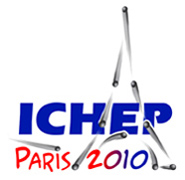Speaker
Prof.
Sheldon Stone
(Syracuse University)
Description
The CP Violating asymmetry in Bs mixing (beta_s) is one of the most promising measurements where physics beyond the Standard Model could be revealed. Currently, such measurements are only a 5% likely to be consistent with SM expectations [1]. While this is not yet a significant deviation it does imply that such measurements should be subject to great scrutiny. The mode Bs -> J/psi phi has been used, and the mode Bs -> phi phi proposed for future measurements. These modes both have two vector particles in the final state and thus angular analyses must be used to disentangle the contributions from CP+ and CP- configurations. All publications of beta_s results thus far have not considered the possibility of a substantial S-waves masquerading as low mass K+K- pairs. These could well be the result of a final state formed from an s-quark-anti-s-quark pair in a 0+ spin-parity state, such as the fo(980) meson. I will show estimates of the S-wave contribution to the J/psi phi final state based on Ds decays into K+K-pi+/pi+pi-pi+ [2], and K+K-e+nu/pi+pi-e+nu final states [3]. This S-wave contribution needs to be taken into account in determining beta_s by including an S-wave amplitude in the fit. This may change the central value of current results and will also increase the statistical uncertainty [2,4]. I will also show estimates of the relative Bs decay rate into J/psifo(980), where fo->pi+pi-. Comparisons will be made with theoretical models [5,6]. The J/psifo(980) mode has been suggested as a CP eigenstate that could yield an independent value of beta_s. I will show an estimate of the sensitivity relative to J/psi phi [7]. Specific strategies are proposed for the Bs -> phi phi mode where two S-waves are possible.
[1] CDF and D0 Combined Working Group, “Combination of DØ and CDF Results o Delta Gamma_s and the CP-Violating Phase beta_s” CDF/PHYS/BOTTOM/CDFR/9787, DØ Note 5928-CONF (2009).
[2] S. Stone and L. Zhang, “S-waves and the Measurement of CP Violating Phases in Bs Decays,” Phys. Rev. D79, 074024 (2009) arXiv:0812.2832.
[3]K. M. Ecklund et. al (CLEO), “Study of the semileptonic decay Ds+ -> f0(980) e+ nu and implications for Bs -> J/psi f0,” Phys. Rev. D80, 052009 (2009) arXiv:0907.3201.
[4] Y. Xie, P. Clarke, G. Cowan, and F. Muheim, “Determination of 2beta_s in B_s -> J/psi K^+ K^- Decays in the Presence of a K^+K^- S-Wave Contribution,” JHEP 0909, 074 (2009)
[5] P. Colangelo, F. De Fazio, and W. Wang, “Bs -> fo(980) form factors and Bs decays into fo(980) arXiv:1002.2880.
[6] O. Leitner, J.-P. Dedonder, B. Loiseau, B. El-Bennich, “Scalar resonance effects on the Bs - anti-Bs mixing angle,” arXiv:1003.5980.
[7] S. Stone and L. Zhang, “Measuring the CP Violating Phase in Bs Mixing Using Bs -> J/\psi fo(980)” .
Primary author
Prof.
Sheldon Stone
(Syracuse University)
Co-author
Dr
Liming Zhang
(Syracuse University)




